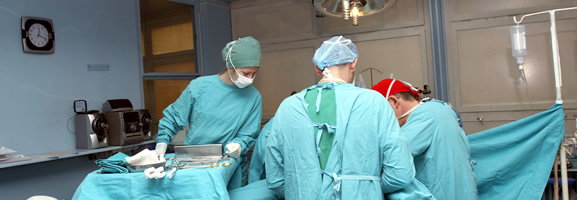WHAT IS A TRANSFORAMINAL LUMBAR INTERBODY FUSION OPERATION?
Fusion simply means joining two bones together in a solid manner, thus preventing movement between the fused vertebrae. Bone or bone substitutes are used to fuse the bones together.
This technique allows a circumferencial fusion or 360 degree fusion to be obtained through a posterior approach to the spine.
DO I NEED A TLIF OPERATION?
Back pain, may be caused by a degenerate lumbar disc. Under these circumstances a lumbar fusion aims to prevent movement between the adjacent vertebrae and so reduce this pain.
A TLIF operation may be used to fuse the spine and improve a patient’s back pain.
This technique allows circumferencial fusion of the spine, but avoids removal of the lamina of the spine. It also causes less disruption to the posterior muscles of the spine, as the surgery can be performed between the muscles, rather than having to reflect the muscles off the spinous processes.
WHAT OTHER TRETMENT OPTIONS ARE THERE?
- INJECTIONS INTO THE SPINEThese procedures are used when pain relief is required, yet surgery is not immediately indicated. Back pain may be improved with facet joint injections or epidural injections (See spinal injections).
- NON FUSION SURGERYThe spine may be stabilized without fusing the spine. Techniques include dynamic stabilisation where by pedicle screws are placed into adjacent vertebrae and then connected together by a non-rigid structure. This has the advantage of maintaining movement within the spine, but may not be suitable for every condition. Suitability for the dynamic stabilisation procedure depends on the type of problem within the spine and the severity of the condition.
- DISC REPLACEMENT SURGERY Cervical disc replacement is becoming a widely used technique for the relief of arm pain secondary to cervical nerve root compression, however disc replacements within the lumbar spine has had a much more varied outcome and is not a universally accepted technique for the relief of chronic lumbar back pain.
PRIOR TO SURGERY
Other treatment options will be discussed and the surgical procedure will be explained, including the postoperative care and potential complications (see complications), prior to you consenting to undergo the operation.
SURGERY
A general anaesthetic is required and once this is administered the patient is placed on their front. Patients are given antibiotics to prevent post-operative surgical infections. An X-ray machine is then used to localize the area of the spine that needs to be operated on.
Usually two incisions (or cuts) are made in the posterior aspect of the spine, and the muscles are retracted to reach the spine. Pedicle screws are inserted in the same manner as for an instrumented posterior-lateral fusion. The facets joints at the back of the spine are then removed and the intervertebral disc between the vertebral bodies is removed. A single nerve root is then temporarily retracted out of the way to allow a curved cage packed with bone graft to be inserted between the vertebral bodies.
The pedicle screws are connected together with the rods and more bone graft is placed between the transverse processes of the vertebral bodies, to obtain a fusion

POST OPERATIVE CARE
You will reviewed by your operating surgeon the day after surgery and the majority of patients will be able to mobiles with the assistance of the physiotherapist.
Your Physiotherapist will advice you on movements, which need to be avoided prior to your discharge home. Most patients spend approximately two to three days in hospital following the procedure. They will be mobilising around the ward and be able to go up and down the stairs prior to discharging home.
HOW LONG UNTIL I AM BETTER?
After surgery it is not uncommon to have various aches and pains in and around the wound, and in the bony pelvis, hips and thighs. These usually improve with time.
It is very helpful to have seen a physiotherapist before your surgery and even more important to see one postoperatively. You can receive information on exercises and on how to move and how to build up your core [back and abdominal] muscles long-term in order to help best maintain the strength of your back.
Patients usually return to work between six to eight weeks following surgery, depending on their job.







